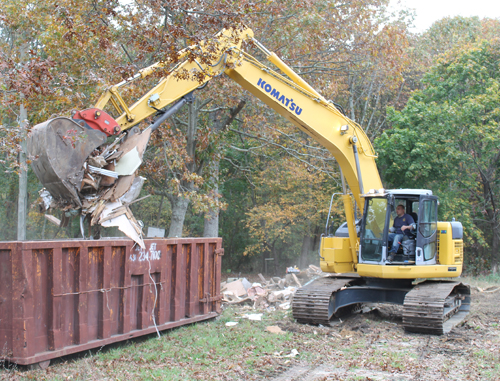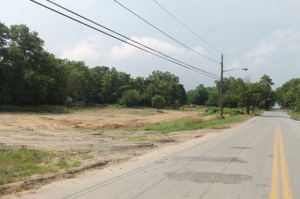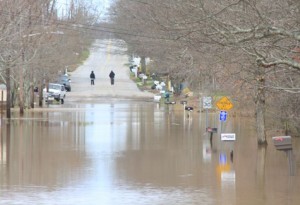Horton Avenue plans on hold after price jumps $2 million

A plan for Riverhead Town to use federal grant money to install flood-prevention measures on Horton Avenue has stalled after a new engineering report forced the price of the project to jump nearly five times higher.
Now town officials say unless they can secure more grant funding, the drainage plan is dead in the water.
“I think the [Town] Board is not going to be able to go forward with the second phase,” said Supervisor Sean Walter. “The money just isn’t there. We can’t print money like the federal government.”
The original proposal for $600,000 worth of drainage installation was approved by the Federal Emergency Management Agency through a reimbursement grant in October 2011, more than a year after torrential rains flooded Horton Avenue, forcing out more than a dozen families whose homes were damaged by the waters.

But a new report discovered by the town’s engineering department has revealed that the amount of land that drains into the Horton Avenue area is nearly double what was originally estimated. That drove the price up to $2.9 million, town officials said.
Town engineer Drew Dillingham said a report filed by a consulting firm in 1979 shows the acreage that feeds into the watershed was “significantly higher” than the 700 acres he originally estimated.
Mr. Dillingham checked the area again and found that the acreage was closer to 1,200.
“Everything ends up there, or in the vicinity,” he said. “What that means is, you’ve got a lot more water coming to your design than you initially anticipated.”
Mr. Dillingham said he was rushed on the initial study because of tight FEMA deadlines.
“This was a slam-together, fast-estimate job,” he said. “Everything was in crisis mode.”
The original plan called for shallow channels called swales to be dug north of Reeves Avenue in a farm field, he said. But because about twice as much water flows into the area near Horton Avenue, the new design calls for moving the swales by clearing a wooded area east of Horton Avenue and replacing it with sand trenches, digging out a nearby dry pond seven feet down to groundwater and creating a man-made wetland that would catch the rainwater.
Out of the $2.9 million cost of the new project, about $2.3 million would pay for labor to remove the wooded area, with the remaining $600,000 set aside for materials and plantings, Mr. Dillingham said.
Mr. Dillingham said that because the town was forced to update the plan and increase the price, FEMA would now demand the town put more of its own money into the project.
He said Police Chief David Hegermiller, who is the town’s FEMA liaison, is trying to find other ways to fund the project.

“We are in fact looking at other grants to get this done,” he said, adding that Chief Hegermiller is also considering building a sump in the area, a cheaper alternative to the current $2.9 million proposal. Mr. Dillingham said the sump would provide more “more bang for your buck,” but he was unsure if FEMA places restrictions on what type of solutions the town could use for that area.
The man-made wetlands management project was part of a larger $3 million grant from the Federal Emergency Management Agency that let the town buy back homes from the flood victims at pre-flood values and demolish the houses.
Though the wetlands project has stalled and may be abandoned, Mr. Walter said the primary goal of the project was to get residents out of the potential flood zone.
“We moved the people out of harms way,” he said. “At this point, if it were to flood, no houses would be underwater.”
Former Horton Avenue resident Linda Hobson, who became an advocate for the flood victims after the 2010 storm and worked with politicians to get the grant approved, said she’s concerned by the way the street looks now that the homes have been demolished.
“There are still residents living up there and I’m not sure they’re going to want to live there, with what it looks like right now,” she said. “You dug out some houses and it looks like a big void.”
But she said that she is “very content” with the outcome for her and her fellow flood victims, one of whom recently closed on a new house in Center Moriches paid for by the funds she received by selling her damaged house back to the town.
“I am elated that it’s over and that I’m getting my life back together … The most important part of it was done, and that was the part that concerned people and housing,” Ms. Hobson said. “We’ll just have to move on from here.”








